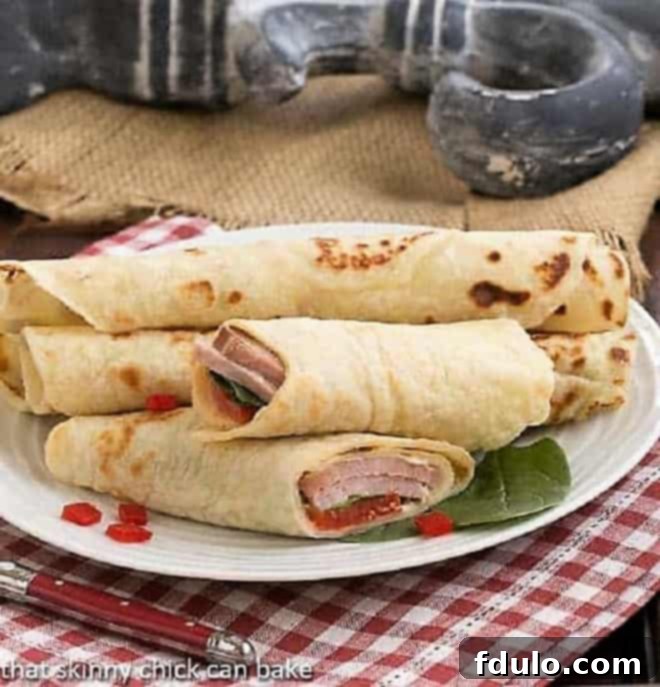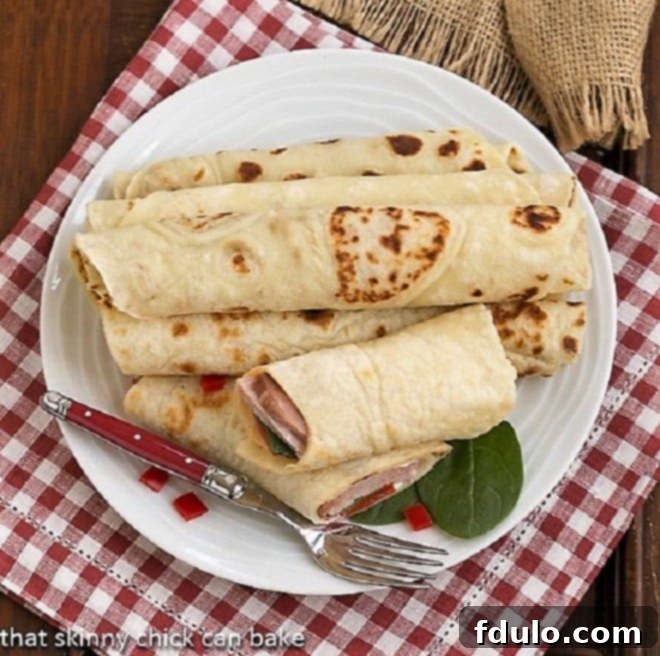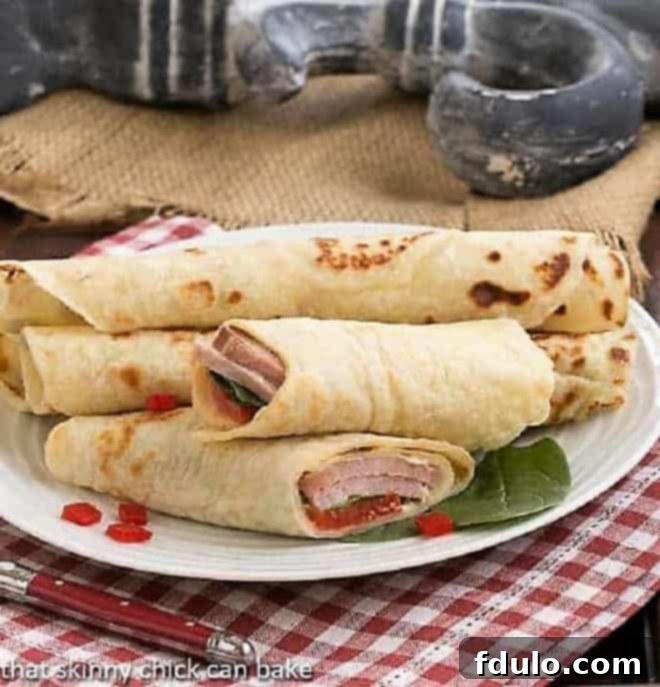Potato Lefse: A Cherished Norwegian Flatbread for Every Occasion
Delight in the heartwarming tradition of Potato Lefse, a remarkably versatile and utterly simple Norwegian flatbread that brings a touch of Scandinavian heritage to your table. Crafted with humble potatoes and rolled to delicate thinness, this classic treat is particularly beloved during the holidays, though its comforting appeal makes it perfect any time of year.
This Lefse Recipe yields a flatbread that is wonderfully soft and tender, with an inviting aroma reminiscent of a freshly buttered baked potato filling your kitchen as it cooks. It’s a culinary experience that’s as delightful to make as it is to savor.

Why You’ll Adore Homemade Potato Lefse
There are countless reasons why potato lefse has remained a beloved staple in Norwegian homes for generations, and why you’ll fall in love with making it yourself:
- Effortless Preparation: Unlike many traditional bread recipes, there’s no yeast involved in making this flatbread, which means no lengthy proofing times. You can prepare the potato base one day and cook the lefse the next, making it an ideal project for busy schedules, especially around the holidays.
- Incredible Versatility: Lefse is a culinary chameleon, pairing beautifully with both sweet and savory toppings. Whether you slather it with butter and cinnamon sugar for a delightful breakfast or use it to wrap savory fillings for a light lunch, its mild flavor is the perfect canvas.
- Authentic Potato Goodness: This recipe calls for real, fresh potatoes, not instant flakes. This commitment to authentic ingredients ensures a superior flavor and a smooth, tender texture that instant potatoes simply cannot replicate, delivering that comforting, homemade taste.
- A Taste of Tradition: Lefse is more than just food; it’s a cherished cultural experience. For many, it’s a traditional Norwegian Christmas treat that evokes memories of family gatherings and festive celebrations. Bringing this recipe into your home is a wonderful way to connect with Scandinavian heritage and create new traditions.
Essential Ingredients for Perfect Lefse
Creating delicious potato lefse begins with selecting the right ingredients. Here’s a closer look at what you’ll need and why each component is vital:
- Kitchen Staples: You’ll need everyday items like granulated sugar and salt. The sugar adds a subtle sweetness that makes the lefse versatile for both sweet and savory applications, while salt balances the flavors.
- Potatoes: The star of the show! Russet potatoes are highly recommended for lefse due to their high starch content and low moisture. When cooked and riced, they become incredibly fluffy, creating a light and airy dough. Avoid waxy potatoes (like red or new potatoes) as they retain too much moisture, resulting in a sticky, difficult-to-work-with dough that won’t roll as thinly.
- Heavy Cream: Opt for heavy cream with at least 36% butterfat. This richness contributes significantly to the tender texture and delicious flavor of the lefse. It helps bind the ingredients and adds a creamy depth.
- Butter: Salted butter is perfectly fine for this recipe. Butter adds essential flavor, moisture, and helps create that melt-in-your-mouth texture. If using unsalted butter, you might consider adding a tiny pinch more salt to the mixture.
Ensuring you have these quality ingredients on hand will set you up for success in crafting truly authentic and delightful potato lefse.
Crafting Your Own Potato Lefse: A Step-by-Step Guide
Making potato lefse is a rewarding process that combines simple ingredients with a bit of technique. Follow these steps carefully to achieve tender, perfectly cooked flatbreads:
- Prepare and Rice the Potatoes: Begin by peeling and dicing your russet potatoes into uniform pieces. Cook them in lightly salted water until they are fork-tender but not mushy—approximately 10-15 minutes, depending on the size. Drain them thoroughly and spread them out briefly on a baking sheet or a clean kitchen towel to air dry. This crucial step removes excess surface moisture, which is vital for a workable dough. Once cooled slightly, rice them into a large bowl using a potato ricer for the smoothest possible texture. Lumps can make rolling difficult, so ensure they are well-riced.
- Mix the Base Dough and Chill Overnight: While the riced potatoes are still warm, add the butter (it will melt into the potatoes), heavy cream, sugar, and salt. Mix these ingredients thoroughly until everything is well combined and the butter has fully incorporated. Do not overmix, but ensure the mixture is homogenous. Once mixed, transfer the potato mixture to a shallow dish, leaving it uncovered, and refrigerate it overnight. This overnight chill allows the mixture to dry out further, firm up, and develop its flavors, making it much easier to handle the next day.
- Incorporate Flour and Test the Dough: The following day, remove the chilled potato mixture from the refrigerator. Gradually add the all-purpose flour, starting with about 1 cup, and mix it into the potatoes with your hands. Continue to add flour, one heaping tablespoon at a time, until the mixture transforms into a cohesive, non-sticky dough. A key indicator that you’ve added enough flour is the “pinch test”: pinch a small piece of the dough between your fingers; if it doesn’t stick to your skin, it’s ready. The exact amount of flour can vary depending on the moisture content of your potatoes, so trust your judgment and the pinch test.
- Form and Roll the Dough: Once your dough is perfectly textured, divide it into small, uniform balls, typically around 24 for this recipe. Prepare your work surface by dusting it generously with flour. Place a dough ball on the floured surface and begin rolling it out with a rolling pin. Aim for a very thin, almost translucent, round shape, similar to a large crepe. Use additional flour as needed to prevent sticking, but avoid using too much, which can make the lefse tough. Consistent thinness is the goal for even cooking and optimal texture.
- Cook the Lefse on a Griddle: Heat an ungreased griddle to a high temperature, typically between 450-500°F (230-260°C). Carefully transfer a rolled-out lefse round onto the hot griddle. Cook for approximately one to two minutes on the first side, or until you see small bubbles appearing on the surface and the underside has developed light brown spots. Then, using a thin spatula or a traditional lefse stick, carefully flip the lefse to cook the second side for another minute or so, until it also has brown spots. The cooking process is quick, so stay attentive.
- Serve Warm and Enjoy: As each piece of lefse finishes cooking, immediately transfer it to a clean kitchen towel and cover it with another part of the towel. This helps to keep the lefse warm and pliable. Serve your freshly made potato lefse warm, directly from the griddle, with your favorite sweet or savory toppings.

Expert Tips for Flawless Potato Lefse
Achieving perfect potato lefse can be an art, but with these expert tips, you’ll master it in no time:
- Embrace Russet Potatoes: This is a non-negotiable! Always choose russet potatoes over waxy varieties like new or red potatoes. Russets have a drier, starchier texture that produces a light, fluffy dough essential for thin, pliable lefse. Waxy potatoes contain too much water, leading to a sticky, unmanageable dough.
- Master the Ricer: Ensure your potatoes are thoroughly riced to create a smooth, lump-free dough. A potato ricer is your best friend here, creating uniform potato particles. Lumps can tear your delicate dough during rolling. If you don’t have a ricer, a sturdy fork or a coarse grater can work, but ensure the potatoes are mashed very finely.
- The Power of the Overnight Chill: Do not skip refrigerating your potato mixture uncovered overnight. This step is crucial for drying out the mixture, firming it up, and making it much easier to handle and roll thinly the next day. A well-chilled, slightly drier dough is key to preventing stickiness.
- The Flour Balance: When adding flour the next day, mix the dough with your hands. This allows you to feel the dough’s consistency and ensures all ingredients are well incorporated. You’ll know you have added enough flour when you can pinch a piece of dough between your fingers, and it doesn’t stick to your skin. This “pinch test” is more reliable than a set measurement, as potato moisture can vary.
- Generously Flour Your Surface: Lefse dough is delicate and prone to sticking. Always roll out the dough on a well-floured surface, and keep your rolling pin dusted with flour too. This prevents tearing and helps you achieve those beautifully thin, round sheets.
- Optimize Your Griddle: While a traditional lefse griddle with grooved rolling pins and a lefse stick can be helpful, a standard non-stick griddle or a large cast-iron skillet works perfectly. A non-stick surface makes flipping much easier and reduces the risk of the delicate dough tearing.
- High Heat, Quick Cook: Cook your lefse on a relatively high heat (450-500°F / 230-260°C). The cooking time is brief—just one to two minutes per side. Cook the first side until the top bubbles and the underside develops light brown spots. This initial cooking helps to set the dough, making it stronger and easier to flip.
- The Art of Flipping: Due to its thinness, lefse dough can be delicate. Use a wide, thin spatula or a dedicated lefse stick for flipping. Slide it gently under the entire piece of lefse to support it fully, then flip with a swift, confident motion.
- Stack and Cover: As each piece of lefse comes off the griddle, immediately stack it on a clean kitchen towel and cover it. This traps the steam, keeping the lefse soft, warm, and pliable. Without covering, it can dry out and become brittle.
Bea Ojakangas’ renowned recipe for this Potato Lefse can be explored further here or found in the “Baking with Julia” cookbook, a testament to its classic appeal.
Frequently Asked Questions About Lefse
Lefse (pronounced LEFF-sa) is a traditional soft Norwegian flatbread, often likened to a thin crepe or tortilla, but with a distinctive potato base. It’s a cherished part of Scandinavian cuisine, especially enjoyed during holidays and special occasions. Unlike many other flatbreads, it contains no eggs or yeast, relying on riced potatoes for its unique texture. It’s typically rolled very thin, often with a special grooved rolling pin, and cooked quickly on a hot griddle.
For the best lefse, russet potatoes are the undisputed champion. Their high starch content and relatively low moisture ensure that when cooked and riced, they create a fluffy, light base that is easy to roll out thinly without becoming sticky. Waxy potatoes, such as red or new potatoes, should be avoided as they absorb too much water, leading to a dense, challenging dough.
Ricing potatoes is crucial for a smooth lefse dough. The most effective tool is a potato ricer (affiliate link), which functions much like an oversized garlic press, extruding the cooked potato into fine, uniform strands. This method eliminates lumps, which are detrimental to a smooth dough. As an alternative, you can grate the cooked potatoes using the fine side of a box grater, or mash them vigorously with a fork until perfectly smooth, though a ricer yields the best results.
No, a special lefse griddle, while traditional, is not strictly necessary. You can absolutely make delicious lefse using kitchen equipment you likely already own. A large, flat non-stick electric griddle is excellent for maintaining consistent heat. Alternatively, a large skillet or a griddle-like pan that covers two burners (often used for pancakes) will also work wonderfully. The key is a flat, hot surface.
If stored properly in an airtight container or tightly wrapped, homemade lefse can keep for up to a week in the refrigerator, maintaining its soft texture. For longer storage, lefse freezes exceptionally well. Layer individual pieces with wax paper or parchment paper to prevent sticking, then wrap them tightly in plastic wrap and aluminum foil. Frozen lefse can be stored for up to 6 months. Thaw at room temperature or gently warm for serving.
Lefse is incredibly versatile! It’s best served warm, straight off the griddle, or gently reheated. For a classic sweet treat, spread it with butter and a sprinkle of sugar or cinnamon sugar, then roll it up. Honey, fruit preserves, or jam also make delightful sweet toppings. For savory options, try it with butter and a pinch of salt, or use it to wrap salt-dried fish, scrambled eggs, or leftover ham. It’s also famously used to wrap sausages to create “potato lumpa,” offering a hearty and traditional meal.
The correct pronunciation for this delightful Norwegian flatbread is LEFF-sa.
Explore More Delicious Bread Recipes
If you’ve enjoyed making this Potato Lefse, you might also love exploring these other fantastic bread recipes:
- Homemade Naan from The Comfort of Cooking
- Classic Oatmeal Bread
- Homemade Pita Bread
- Braided Challah Bread
- Discover more of the Best Bread Recipes
Stay in touch through social media @ Instagram, Facebook, and Pinterest. Don’t forget to tag me when you try one of my recipes! And if you love the results, please give it a 5-star rating in the recipe card below.

Potato Lefse
1 hour
5 minutes
1 hour 5 minutes
24
A Norwegian potato bread traditionally made for special occasions!
Ingredients
- 1 1/2 pounds russet potatoes, peeled and diced
- 1/2 stick (2 ounces) butter
- 1/2 cup heavy cream
- 2 tablespoons sugar
- 1 teaspoon salt
- 1 1/2 – 2 1/2 cups all purpose flour, plus more for flouring the work surface and rolling pin
Instructions
- Cook the potatoes in enough water to cover, about 10 minutes. The potatoes should be fork-tender, but not overcooked.
- Drain the potatoes and spread them out onto a baking dish to dry.
- Rice (or grate) the potatoes into a large bowl.
- Add the butter and stir until it is fully melted.
- Add the cream, sugar, and salt, and stir.
- Refrigerate uncovered overnight.
- When you are ready to make the lefse, prepare a work surface and dust with flour. Place a kitchen towel on your counter.
- Add a cup of flour to the potatoes and mix with your hands. Continue to add flour to the potatoes, one heaping tablespoon at a time, until you have an actual dough, and not just stiff mashed potatoes.
- Divide the dough into 24 balls.
- Heat an ungreased griddle to 450 to 500°.
- Roll a dough ball out to a very thin pancake, using flour to dust the surface as needed.
- Place it onto the griddle. Cook for one to two minutes, and then flip it over to cook the other side.
- Place the lefse onto the towel and cover with part of the towel.
- Serve warm with butter, sugar, or cinnamon sugar. Jam and preserves work well, too.
- Refrigerate for up to a week or freeze for up to 6 months.
Notes
Recipe adapted from “Baking with Julia” by Dorie Greenspan.
Recommended Products
As an Amazon Associate and member of other affiliate programs, I earn from qualifying purchases.
- OXO Vegetable Peeler
- French Rolling Pin
- Potato Ricer
Nutrition Information:
Yield:
50
Serving Size:
2 lefse
Amount Per Serving:
Calories: 202Total Fat: 11gSaturated Fat: 7gTrans Fat: 0gUnsaturated Fat: 3gCholesterol: 30mgSodium: 137mgCarbohydrates: 23gFiber: 2gSugar: 2gProtein: 3g
HOW MUCH DID YOU LOVE THIS RECIPE?
Please leave a comment on the blog or share a photo on Pinterest
